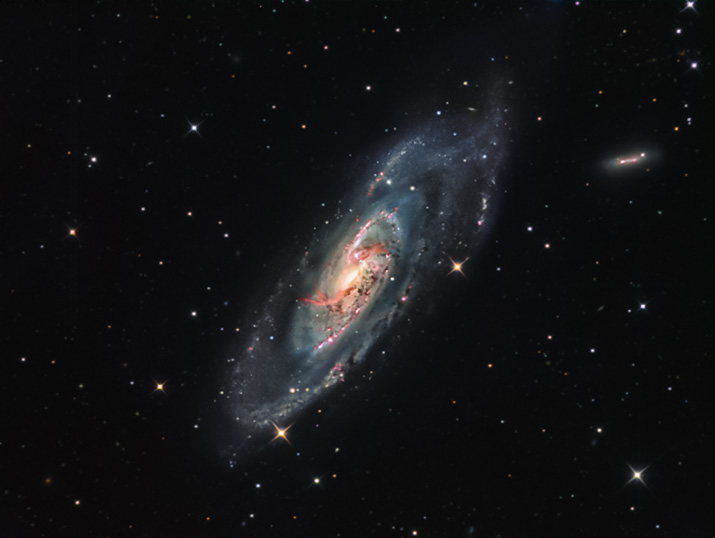
|
Date: April 9/10/11/12/16, 2019 Location: Dark Sky Observatory - Davis Mountains Texas Telescope: ATRC10 - Mount: Paramount MX - Camera: Apogee Alta U8300 Exposure: L = 360 min. - Ha = 420 min. - R G B = 160 min. each Image Credit: Preston Starr and Donald Waid Click on the image to view at higher resolution. |

|
Discovered by Pierre Mechain in 1781. M106 (NGC4258) is located in the constellation Canes Venatici and very close to the better known constellation of Ursa Major. The distance to the galaxy has been measured to be 23.6 million light-years from the Earth. M106 is intermediate between a "barred" spiral and a "normal" spiral galaxy giving it an eye-catching appearance. It is an active galaxy and shines extremely bright in the radio as well as the high energy portion of the spectrum and is thus classified a "Seyfert" galaxy. As with all large galaxies, a super massive black hole likely lies at its center and is the probable source of the high-energy radiation. Two "red streamers" of ionized hydrogen are extending from the core of the galaxy. The streamers are evident in Hydrogen Alpha filtered data. These H-Alpha features are similar to the red streamers associated with the active galaxy M82. The small galaxy in the upper right of the image is designated NGC4248 and is a possible companion galaxy to M106.
1
http://www.messier.seds.org/m/m106.html
|